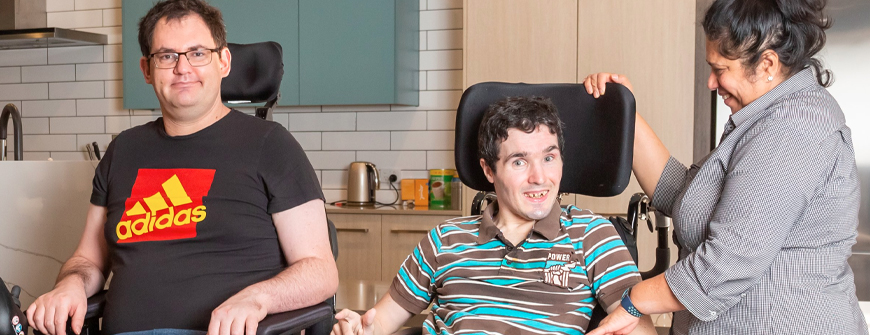Huntington’s disease (HD) is a rare disorder that runs within the family. It’s similar to dementia wherein brain neurons slowly shrink and die. Over time, this deterioration leads to motor dysfunction, psychiatric symptoms, and cognitive function decline, which are precursors to dementia.
Understanding the structural brain correlates of dementia in HD provides critical insights into the mechanisms underlying memory lapse symptoms and cognitive impairment. With a sufficient grasp of the subject, families and doctors can identify potential avenues for treatment.
The Scope of Huntington’s Disease
Huntington’s disease is a rare genetic disorder, with prevalence varying by geography and ethnicity. In the United States, approximately 4.1-5.2 per 100,000 people are living with this condition. Estimates in Europe and Canada suggest it affects 4-7 persons and 2.4-8.4 persons per 100,000, respectively. Globally, populations of Northern European descent show the highest prevalence, consistent with the disease’s origins.
People with HD have a minor error in a gene called huntingtin. Since this brain disorder is autosomal dominant, children only need one copy of this faulty mutated gene from one of their parents to get a similar diagnosis. The risk of parents passing this condition to their young ones is 50%.
Understanding Structural Changes in the Brain
Research has consistently demonstrated that changes in the brain’s architecture are central to the development and progression of dementia in Huntington’s disease. Studies using advanced imaging techniques reveal that posterior cortical atrophy and thinning of the parietal and temporal lobes are key contributors to cognitive decline. These changes are linked to deficits in memory, spatial awareness, and problem-solving abilities.
The hippocampus, a region critical for memory storage, often exhibits significant damage in Huntington’s disease. This decline contributes to memory disorders that characterize the later stages of the condition. Moreover, posterior atrophy in the occipital lobe impairs visual processing, limiting a person’s ability to perform everyday tasks.
Patterns of Brain Atrophy in Huntington’s Disease
So, how does HD affect the information processing center of the body? One study explored the structural brain changes associated with cognitive impairment in HD. The research focused on 35 early-to-mild symptomatic HD patients and 15 healthy controls. Experts used advanced imaging techniques to identify differences in mild atrophy of the brain and related structures.
Key findings from the study include:
- Researchers observed considerable deterioration in subcortical, parietal, temporal, and occipital brain regions in HD patients, particularly those with dementia.
- Posterior cortical atrophy and posterior atrophy were prominent in individuals with severe cognitive damage.
- Structural changes were strongly correlated with deficits in memory, language, visuoconstructive abilities, and frontal-executive functions.
- Cognitive impairment observed in HD patients with dementia extended beyond the traditional frontal-executive dysfunction commonly associated with HD.
This study proves that HD and dementia are correlated, particularly in their impact on the brain's structures.
Symptoms of Huntington’s Disease
Huntington’s disease affects children and adults alike. Although rare, early-onset HD can develop in children or adolescents. Meanwhile, symptoms of adult-onset HD, which is the prevalent type, start in people in their mid-30s and 40s.
Common indications of the disease include:
- Cognitive impairments such as memory lapse symptoms, difficulty organizing tasks, and poor judgment
- Psychiatric symptoms, including depression, anxiety, and irritability
- Movement disorders, such as involuntary jerking, muscle rigidity, and impaired coordination
The progressive nature of these symptoms often leads to severe disability and loss of independence. That's why detecting the disease at its initial onset is essential to manage it long-term. Like dementia, there's no cure for HD yet or medications that can delay its progress. Once diagnosed, treatment only includes management strategies.
Early Diagnosis and Disease Management
Identifying Huntington’s disease at its earliest stage is critical for keeping the symptoms at bay. Early diagnosis is important in tailoring interventions that treat memory loss and address the challenges in your loved one’s behaviors. Doctors often combine strategies such as genetic testing, neuroimaging, and neuropsychological evaluations to detect signs of HD or cognitive lapses.
Like other brain disorders, HD treatment is more effective if holistic. The care plan must cover both the physical and cognitive aspects. For instance, a brain atrophy treatment may include physical therapy to maintain mobility, cognitive rehabilitation to improve attention and memory, and medications to manage mood disorders and anxiety. It should be integrative and all-inclusive.
Diagnostic Tools and Interventions
Early detection of brain impairment in HD is crucial for planning effective interventions. Diagnosis typically includes:
- Memory testing to identify early deficits in working memory, episodic memory, and attention
- Comprehensive cognitive examinations to assess executive functions, language, and visuospatial skills
- Mental health evaluation to determine one’s emotional state and look for patterns of substance abuse or disordered thinking
If suspected of HD, your doctor may do a series of tests to evaluate your risk for the disease.
Advantages of Multidisciplinary Care
Given the complexity of HD, a multidisciplinary approach is essential to make care effective. The care team often includes specialists in neurology, psychiatry, physical therapy, and occupational therapy, collaborating to address the full spectrum of symptoms.
Apart from medical care, family caregivers providing in-home assistance must be educated about managing memory lapse symptoms and shifts in behavior. Participating in support groups and accessing resources tailored to HD can help them navigate the challenges of providing care for a loved one with dementia-like symptoms while maintaining their own well-being.
Key Strategies for Managing the Disease
Since there’s no cure for HD, post-diagnosis interventions focus on delaying the onset of the symptoms and preserving brain and body functions for as long as possible. Here are ways physicians do it.
- Genetic counseling and testing: Early identification of at-risk individuals supports proactive monitoring and planning.
- Physical therapy: Patients work with a licensed professional to maintain mobility and reduce fall risk.
- Cognitive rehabilitation: Those showing cognitive decline are enrolled in programs tailored to strengthen memory, attention, and executive skills.
- Medication management: Doctors prescribe drugs to minimize mood disorders, anxiety, and irritability.
- Behavioral interventions: Families can hire a certified caregiver to manage irritability, aggression, and other behavioral challenges.
- Support for caregivers: Support for family members turned caregivers through education, counseling, and respite care can help reduce the demands of caregiving.
How Lifestyle Modifications Help
Although HD is incurable, lifestyle changes can help preserve brain health and mitigate the impact of symptoms. Engaging in regular physical activity, eating a nutrient-rich diet, and participating in brain exercises may optimize cognitive function and delay the onset of debilitating symptoms.
Social interaction and maintaining a structured daily routine may also help manage memory disorders and reduce feelings of isolation.
Holistic Care Can Support Your Loved One With HD
If a loved one is diagnosed with HD, establish a capable care team that will ensure they receive adequate comprehensive care and meet their needs from physical and cognitive. Ask your doctor for referrals if you need help. Book a free consultation with one of our dementia advisors for any questions related to memory loss, including home care tips.
More importantly, encourage your loved one to build a healthy lifestyle as a natural remedy to manage the symptoms. Eating healthy, getting enough sleep, and walking or running are some non-drug interventions to treat memory loss and other cognitive diseases.
Syed has years of experience dealing with people, understanding their needs, and helping them find solutions to their problems.
As a Certified Senior Advisor (CSA), Certified Dementia Practitioner (CDP), Certified Montessori Dementia Care Professional (CMDCP), Syed is committed to working closely with Senior and their family knowing what is it like for individuals facing a challenging time, at times groping in dark trying to figure what is the appropriate next step or care level for their unique situation.
Syed and Senex Memory Advisors are fully committed to working closely with families in creating a personalized, step-by-step process memory care plan at zero cost.





Leave a comment